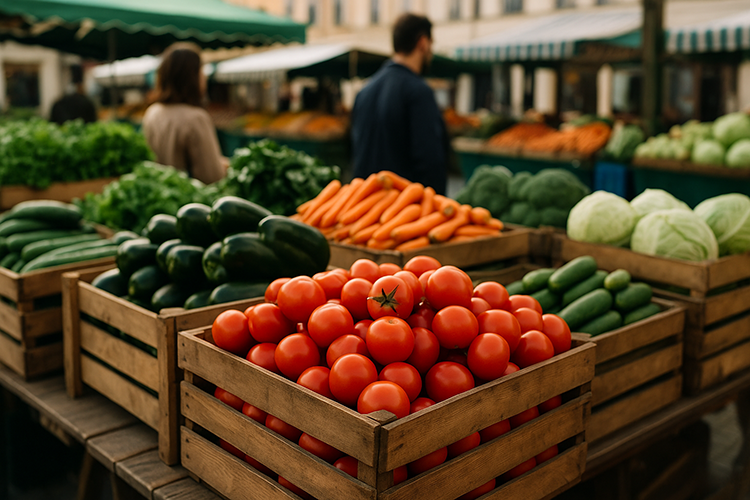Central Europe’s Vegetable Trade Deficits Deepen
Central European countries remained heavily dependent on imports of fresh vegetables last year, with trade statistics pointing to widening deficits across the region.
In the Czech Republic, the shortfall reached a new peak. Imports of more than one million tonnes of vegetables were recorded, while exports covered only a fraction of that volume. The value of goods brought in exceeded 19 billion crowns, compared with roughly 5 billion crowns in sales abroad. As a result, the trade gap in this category climbed to nearly 13.8 billion crowns – the highest on record and continuing a rising trend seen since 2020.
Similar patterns are visible in neighbouring states. Eurostat data confirm that Poland, Hungary, Slovakia, Austria and Slovenia all imported substantially more vegetables than they exported in 2024, leaving each country with a negative balance. The structure is consistent: southern and western European producers such as Spain, Italy and the Netherlands remain the main suppliers to central markets, complemented by shipments from Morocco.
The underlying reasons are comparable across borders. Domestic production in Central Europe is constrained by shorter growing seasons, limited acreage and rising input costs, leaving the region unable to cover demand throughout the year. While greenhouse projects have expanded in recent years, they have not offset structural pressures, particularly in years of poor weather or higher energy prices.
Poland remains the largest player in terms of both imports and exports, given its scale of farming and role as a transit country, but still records a deficit in value terms. Hungary and Slovakia, with smaller agricultural bases, show proportionally larger gaps. Austria and Slovenia are likewise dependent on imports to satisfy consumer demand, despite investments in regional supply chains.
The European Union as a whole is a net importer of vegetables, with southern member states acting as major exporters to the rest of the continent. Central European countries continue to reflect this divide: they are consumers first and foremost, relying on external supply while their own output struggles to compete in terms of volume, cost and year-round availability.









